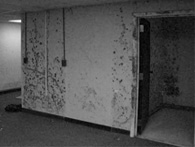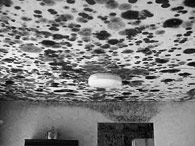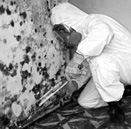Mold and Water Damage Abatement / Remediation


- Mold describes a broad range of fungi that reproduce through microscopic spores and are common in the environment, even in the air you breathe.
- Failure to address water / moisture accumulation is the primary factor for mold growth in buildings.
- Abatement methods include removal of the affected materials and eradication of the moisture source.
- Contact your local health dept. for state and local
regulations regarding mold remediation in your area.
regulations regarding mold remediation in your area.

Molds are found everywhere inside and out, and can grow on almost any substance when suitable conditions are present: specifically the availability of nutrients, moisture and time. Mold (or water-damage) remediation is the process of the safe removal and reduction of mold-bearing materials in your environment and the eliminating the conditions that allow mold to grow or reoccur. Some molds produce mycotoxins that can pose serious health risks to humans and animals. The term "toxic mold" refers to molds such as Stachybotrys chartarum ("Black Mold"), and not to all molds. High levels of mycotoxin exposure can be extremely harmful, leading to neurological problems and in some cases death. Prolonged daily exposure (such as in a home or workplace), is believed to be particularly harmful as well. HEPA-equipped air filtration equipment is an important component of proper and safe mold and water damage remediation and abatement projects, and AirWorkx™ negative air machines are certified and up to the task.

Common Abatement Methods:
Evaluation involves assessing the area infected with mold to ensure safety, determining the cause, severity and source of the issue and deciding on a plan of action that properly approaches the mold problem.
Removal of the mold-affected material is the most effective method when combined with moisture management techniques. On-site mold removal often creates large amounts of spores and is a job for professionals who utilize Personal Protective Equipment (PPE) and air filtration systems equipped with HEPA filters.
Replacement involves removing the mold-damaged object entirely and replacing it with new material. It’s one of the best methods for mold abatement as the chemicals and proteins which can cause a reaction in humans are still present even in dead mold.
Encapsulation covers and seals the mold-affected surface with a special coating. It is less expensive than more thorough methods of abatement, but not suitable in all cases or for surfaces subject to friction. As with all above methods, moisture management is key to preventing mold recurrence.
For further information, please visit
the EPA Mold and Moisture site, at:
http://www.epa.gov/mold/
Or contact your local health department.